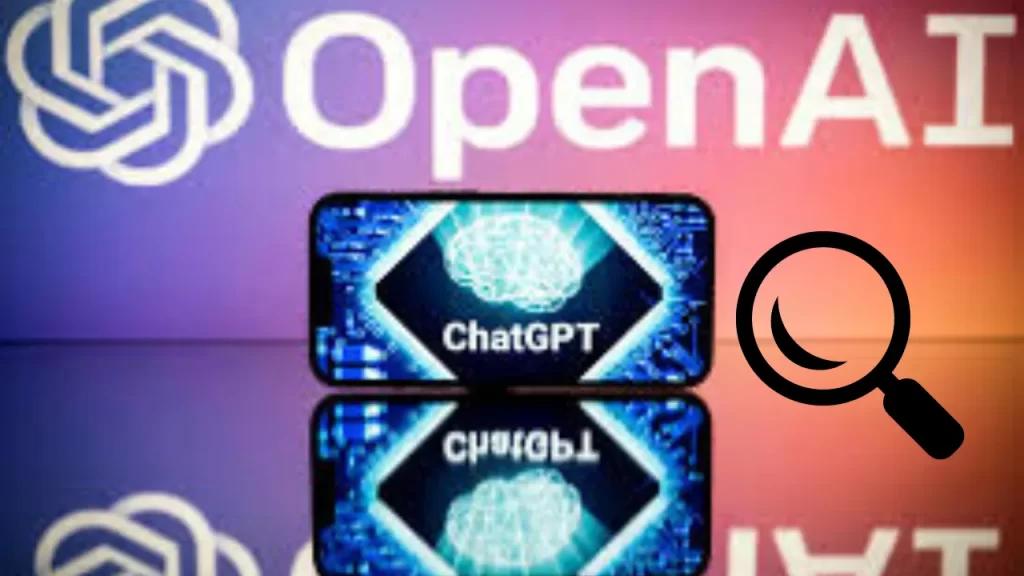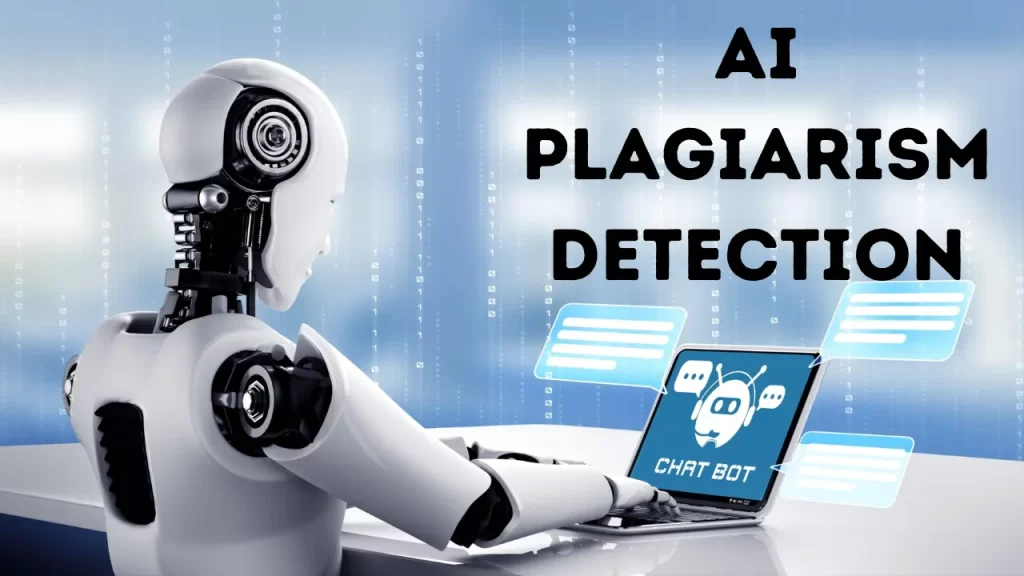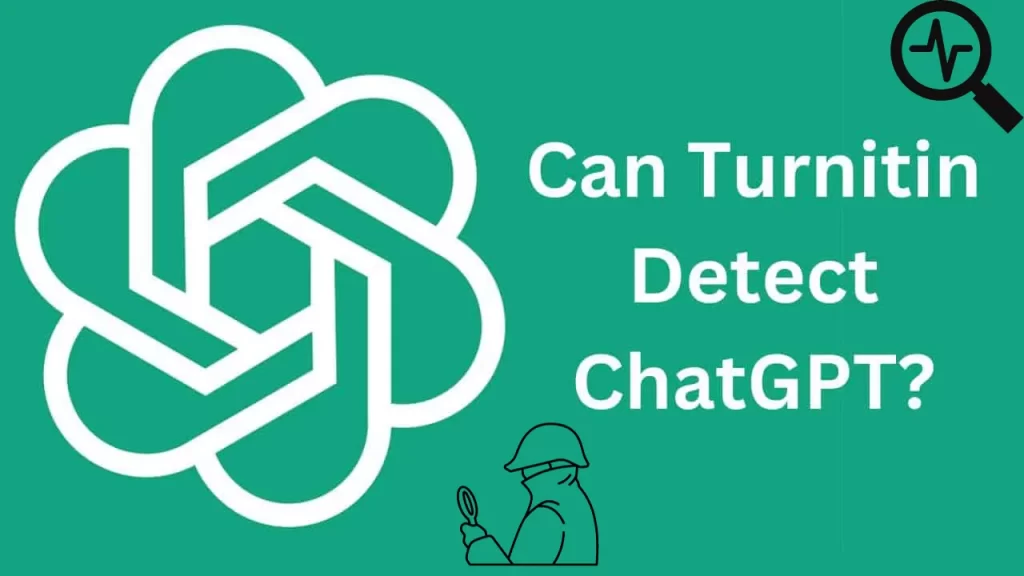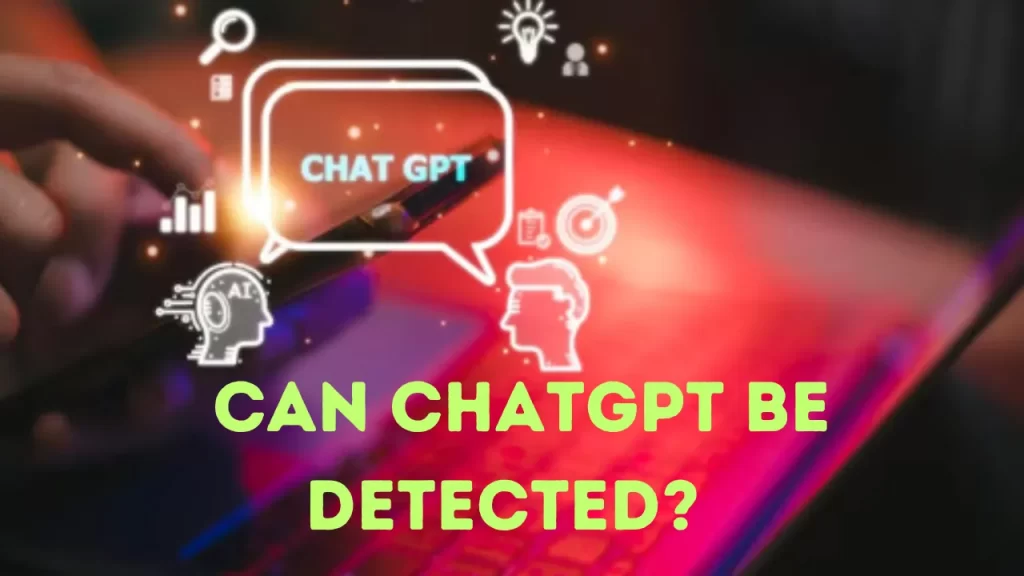Can ChatGPT be detected is easy to answer. Yes, it is possible to see ChatGPOT-generated content with different methods including AI detection tools like Turnitin, GPTZero, and Originality.ai.
AI Chatbots like ChatGPT are in trend these days. These chatbots produce human-like responses and this is a matter of concern for academic institutions. These tools are widely used by students to make their assignments. In such a situation, the old plagiarism detection tools may not be smart enough to make a difference between the real and copied content.
As technology is advancing to detect copyright and AI-generated content the plagiarism detector software needs to be upgraded software like Turnitin and GPTZero works on the principle of comparing the given contents with contents available on various online sources like research papers, books, and research journals.
When you change the existing pattern of the sentence, this may also change the placement of the keywords. In this condition, these software are unable to detect plagiarism and copy contents
What is Language Generation with AI?
Natural Language Generation, known as NLG, is a software process driven by artificial intelligence. It produces natural written or spoken language from structured and unstructured data. This natural written data is passed over to the users in human language that they can comprehend, rather than in a way a computer might.
NLG systems use machine learning algorithms trained on large datasets to generate human-sounding text. The present Neural Networks (RNNs) and Transformers are two examples of deep learning methods that power some of the most advanced NLG systems.
The neural network base model is one of the most common types of AI language models. It consists of multiple layers of interconnected nodes. These nodes are trained on large datasets, such as Wikipedia or news articles, to learn patterns and relationships between words and phrases in human language.
ChatGPT, OpenAI’s large GPT-4-based language model, is one of the most popular AI tools. A huge amount of data was used to train this model so that it can understand and make up language that sounds natural.
ChatGPT is also smart enough to pass high-level graduate-level exams. The powerful AI chatbot tool recently passed both the law bar and the medical board exams.
As we see that ChatGPT and other AI language models generate human-like text, this has raised concerns about their potential misuse.
It has become a challenge to detect the between human and machine-written text. This is crucial to filter such data to prevent misinformation and malicious content from spreading, especially in journalism, cybersecurity, and finance.
What are the Risks of AI-generated Text?
With the advent of AI tools the generation of AI-driven content has become increasingly prevalent. However, it is crucial to recognize the dangers and disadvantages that accompany the widespread dissemination of AI-generated content across the internet. Here are some risks that AI-generated text may propagate:
1. Misinformation and Inaccuracy
This is one of the primary dangers of producing AI-generated content is the potential for misinformation and inaccuracy. AI models are very efficient in creating text, but they lack true comprehension, contextual understanding, and human reasoning. This limitation can lead to the dissemination of inaccurate information, false claims, or content that lacks proper fact-checking, endangering the integrity of online discourse.
2. Propagating Bias and Discrimination
When the AI models generate content spread biased or incomplete data, it creates risky situations. If the training data contains societal prejudices, the generated content may propagate those biases when shared across the internet. This can empower stereotypes, marginalize underrepresented communities, and perpetuate harmful narratives undermining the progress towards equality and respected values.
3. Eliminating Authenticity and Trust
The immense amount of fake and false data can erode the authenticity and trustworthiness of online interactions. Now that users find a large amount of AI-generated text, it becomes harder to discern between genuine human-generated content and AI-driven output. This can lead to skepticism, confusion, and a loss of trust in the information and interactions we encounter online.
4. Ethical Concerns
The propagation of AI-generated content raises ethical concerns and challenges in terms of accountability. AI models, work as robots and they are devoid of moral agency and responsibility for their output. This poses challenges in determining liability, fact-checking accuracy, and addressing potential legal and ethical implications arising from the dissemination of AI-generated content that may be harmful, misleading, or malicious.
5. Robotic Expressions
As AI-generated content becomes more prevalent, there is a risk of destroying the innate creativity of human content. Human-generated content, with its diverse perspectives, emotions, and originality, has long been a cornerstone of online engagement. When there is an over-reliance on AI-generated content, this may sideline human contributions, leading to a homogenized digital landscape devoid of the rich diversity of human experiences and creativity.
6. Replacing of Human Jobs and Skills
The widespread adoption of AI-generated content has implications for the job market. As AI systems become more proficient in generating text, there is a risk of displacing human content creators, journalists, and writers.
What are the Techniques for Detecting Human-generated or AI Text?

Here are some techniques for finding a difference between human and AI-generated text:
1. Look for Repetition of Words and Phrases
ChatGPt produces coherent sentences, but most of the time the AI writing tools have difficulty producing long-form, high-quality content.
It has been observed by many users that AI tools after generating a few high-quality paragraphs on a specific subject, will either start to repeat themselves or spew irrelevant sentences. This is due to the AI tool adding a series of what it thinks are relevant sentences to reach the target word count.
So, when you are going through an article, and you notice that the same words are being used repeatedly, then it was probably written by an AI writing assistant.
And most of the AI-generated articles seem to follow a specific pattern or formula. This kind of writing often makes content predictable and mind-numbing.
2. Search for Unnatural Transitions and Errors
Most of the AI tools find it difficult to correctly interpret the context of a piece of writing. They generate content that lacks the coherence and logical flow of human-written content.
Sometimes the AI-generated content has grammatical mistakes, punctuation errors, and even paragraphs with a disjointed structure.
3. Examine Any Fact-Heavy, Dry Texts
Most of the AI tools generate simple fact-loaded sentences without solid logic when they are asked to generate fact-heavy content.
So if you’re reading an article and notice it’s heavy on facts and light on opinions, it’s likely written by a bot.
4. Absence of emotions
Another noticeable problem with current AI writing tools is their inability to express human emotions and subjective experiences within the content. These things are hard to teach because there are no logical steps explaining how
to feel or perceive the world.
If you notice an article has a flat tone or emotions that feel forced, a bot may have written it.
5. Use an AI content detector tool
This is a popular method to determine whether you’re having AI-generated text or a human written content. Popular AI content detector tools include GPT-2 Output Detector, GLTR (Giant Language Model Test Room), and GPTZero.
Can ChatGPT be Detected: Best Tools to Detect ChatGPT Content

Detection tools are advanced and equipped with the latest detection models. Most are free, with character limits.
Here are some tools and manual methods to determine if an AI wrote a text:
1. Originality AI
This is one of the best AI detector tools on the market. You can use it to scan text for AI and plagiarism. It requires 50-word counts and above. You may expect 94%+ accuracy on the text generated with GPT-3, GPT-3.5, and ChatGPT, 99%+ accuracy on GPT-4 content, and 94.5% accuracy on paraphrased content. By scanning your content with this tool you get the AI percent score and the original percent or human score.
2. Content at Scale
It is a free AI detector tool designed for content marketers and academics. You can check for AI content generated with ChatGPT, GPT-3, and other AI models. Its content score is based on the text’s predictability, probability, and pattern. Content at Scale is also in the generative AI business, the tool can be used to create long-form content with over 2,000 words.
It uses the sentence-by-sentence breakdown strategy which helps users identify sentences written with the AI tool by highlighting its AI detectability using various colors.
3. Winston AI
This is an AI detector tool built for writers, educators, and web publishers. It can detect content generated with generative AI tools like Bard, ChatGPT, GPT-4, and other Large Language Models (LLM). Users also get support for Optical character recognition (OCR) technology which allows users to scan image files for AI content.
4.GPTZero
This is a classification model developed by Princeton University student Edward Tian to help educators predict and detect AI written text. It analyzes texts based on their perplexity, randomness, and burstiness, : With these measures, it analyses the predictability of content based on patterns.
According to the developer, the tool was trained on a large and diverse human-written and AI-generated text, with a focus on English prose. Those looking to integrate GPTZero into their system can request the API, but it comes with a fee.
5. Giant Language Model Test Room
This tool was developed by three researchers from the MIT-IBM Watson AI lab and Harvard NLP. They prepared this excellent free tool for detecting machine-generated text. GLTR is currently the simplest way to predict whether or not casual portions of text were written with AI.
6. AI Text Classifier
It seems strange to detect a text generated by ChatGPT and detected by its own created OpenAI tool. This is so as OpenAI is also an advance of this solution’s drawbacks. You can use this tool with a minimum of 1,000 characters. This tool is less effective with content written by youngsters or not in English and can be easily tricked by AI-generated text with a few minor adjustments.
The tool is free to use and it assigns a grade to each text depending on how likely it is that it was created by AI: highly unlikely, not probable, or ambiguous.
Can Universities Detect ChatGPT?
Yes, universities can detect any AI-generated tool content including ChatGPT. If work is submitted through a university’s learning management system, such as Turnitin, or AI, plagiarism detection should happen. There are also many premium AI detection tools available with a subscription fee.
It is always highly important to be transparent when using tools such as ChatGPT to avoid any issues. Cite your source as normal, and yield the benefits of quick research from ChatGPT but do not copy and paste.
Can ChatGPT Write Essays? How to Use it Ethically
Several students rely on AI tools like ChatGPT to do their academic work. They use it to make assignments, thesis, and school essays. This is the reason why academic authorities are working so hard to fine-tune AI detectors like Turnitin.
This is ethically wrong to use ChatGPt to write a whole essay or thesis for you and the students presenting it as their work. Even with heavy editing chatbots like ChatGPT aren’t always that accurate as their function is to provide a plausible answer rather than necessarily a factually accurate one.
There are a few ways in which AI software can be used that we think are acceptable in an academic context.
1. Proofreading and spellchecking
ChatGPT is a great tool to check the work you’ve already written and make suggestions for correcting your spelling and grammar.
2. Finding reading material
Using ChatGPT to find articles and books on your topic of research helps find information relevant to your study.
3. Suggestion-relevant questions
If you know your area of study but can’t quite decide on a specific question for an essay, then ChatGPT can give you prompts that might give you the spark of inspiration you need.
How can instructors detect the use of ChatGPT?
To detect the AI-generated content, there are some other ways to identify robotic content. The instructors and teachers analyze the language and style of the writing to pinpoint the suspicious part of the content. ChatGPT has a particular style and may use certain phrases or words that are not typical of a student’s work.
Secondly. The instructors can ask students to explain certain concepts or ideas in their own words. In doing so, they can determine if the students truly understand the material.
Has Anyone been Caught Using ChatGPT?
As reported by the Tab, a student of Bolton University in the UK was earlier this year found to have used ChatGPT in the process of writing his essay. His essay included several suspicious references which included a 1952 Ohio State University PhD student’s dissertation as well as a book by Aditya Simha called Leadership Insights for Wizards and Witches: Exploring Effective Leadership Practices through Popular Culture, a book which looks at leadership through the lens of the Harry Potter wizarding world.
Since then The Tab has further reported that at least 146 students in the UK have been caught using the online chatbot and that up to 40 percent of all UK universities have experienced issues with their students using the platform.
AI Detection: What are the ethical implications of using ChatGPT?
Students may need help while doing their writing work, It is not unethical to take help from AI writing tools using them as your writing assistant. They should take into consideration academic integrity when completing assignments with AI tools. Using ChatGPT to write an entire paper would be plagiarism. Using artificial intelligence in this way is not a replacement for their academic work and critical thinking skills.
There are several negatives of using ChatGPT for academic writing. Some of these include:
1. Plagiarism
ChatGPT uses a huge collection of text and code for its training. Because of this, ChatGPT can produce plagiarized text.
2. Academic dishonesty
It is academic dishonesty to use ChatGPT to complete academic assignments. 3. Loss of learning
ChatGPT is not a replacement for independent study. This can make it hard to memorize the content generated by an AI tool replacing your creativity.
4. Loss of inherent intelligence
Relying too much on AI tools and technology may lead you to lose your mental powers and creativity. By relying on ChatGPT to get things done, you’re missing out on the opportunity to hone your analytical and problem-solving skills independently. Because of this, attaining academic and professional success may be challenging.
Turnitin AI Detection: Can Turnitin Detect ChatGPT?

Turnitin is thought to be a reputed tool for plagiarism and it is widely adopted by numerous universities and colleges. Turnitin’s original is based on detecting plagiarism rather than identifying the use of ChatGPT-generated content. However, in recent news, the organization has released a new service called the Turnitin AI Innovation Lab.
Turnitin has never revealed its actual mechanism to scan the AI effect within the content. Turnitin system scans phrases on a document, analyzes them, and then compares the phrase to vast amounts of online data. The main issue the world of plagiarism faced with the rise of ChatGPT was the fact that it creates unique responses, leaving Turnitin with little to cross-reference.
The Turnitin system to detect AI is not perfect. It sometimes flags the work incorrectly. Still, the tool is highly accurate and they only flag something when they are 98% sure it is written by AI. Turnitin’s detection goes through the content deeply.
How does Turnitin Detect Copy and Paste?
Yes, Turnitin can detect the copy-paste content if your source is available online. It runs deep down to identify the AI text, however, development has been underway to ensure Turnitin can fully detect ChatGPT and other chatbots.
How can Turnitin Detect Paraphrasing?
Turnitin might flag certain instances of paraphrasing from Chat GPT, although it is not specifically designed to target AI-generated content. It mainly considers similarities with existing academic sources, which may not always align perfectly with Chat GPT.
What are the Limitations of Turnitin AI?
Turinit is a good tool to detect academic plagiarism, still its AI detection is still not perfect. For instance, detecting mixed-source essays that combine human-written and machine-written sections can be challenging.
Another thing in its limitation is the constant advancement in the GPT models. GPT-4 is expected soon and could have seen much improvement in generating authentic-sounding writing compared to GPT-3.
These limitations make the Turnin it detection system unreliable.
Can You Bypass Turnitin Plagiarism?
Yes, it is possible to bypass Turnitin AI detection. However, it is ethically wrong.
You can befool the Turnitin detection system by rewriting AI-generated content and changing sentence structures or using synonyms.
However, such strategies only result in bringing low-quality work that can negatively affect your grades. Also, any skilled instructor would successfully detect your work as AI generated with its specific tone and use of special words.
So it is advisable that rather than seeking ways to cheat the system, students should focus on creating original content with proper citations and avoiding word-for-word copying.
Is Google, as a Search Engine Interested in Detecting ChatGPT Content?
Google is considered to be a reliable search engineer providing best reliable results to its users.
For this, it has been working constantly to stop spammy content from showing up in search results. Both duplicate content, plagiarism, and earlier, what they named as automatically generated content.
The content generated by AI tools like ChatGPT is perceived as low quality and it is sometimes used to manipulate search rankings rather than helping users.
To maintain the integrity of its search results, Google has been working to remove this type of content from search engine results pages (SERPs) to maintain the integrity of its search results.
They want to focus on high-quality, human-generated content to provide a better experience for users and maintain the search engine’s credibility.
Conclusion
The answer to the question: Can ChatGPT be detected is simple. It is hard to detect the content generated by ChatGPtT with simple plagiarism tools. However, with advanced AI detection tools like Turnitin and CopyScape, it is possible to flag the AI content. These AI tools are constantly updating their AI detection capability with the advancement in AI text generators. This is becoming a real challenge to manipulate AI-generated content.
FAQs
1. Is Turnitin better than GPT zero?
GPT Zero claims to be better than Turnitin when it comes to mitigating false positives. With its advanced machine learning technology, it offers more accurate results.
2. How could Google detect ChatGPT content?
Google can detect AI-written content like Jasper and ChatGPT. This is done by searching for inconsistencies and patterns in the writing style.
3. What is ChatGPT vs. Bard vs. Bing Chat?
Google Bard is good for answering logical questions, and math, and coding problems accurately. OpenAI’s ChatGPT is useful for generating coherent and contextually relevant responses. Meanwhile, Microsoft’s Bing AI aims to provide information leveraging the vast knowledge base of its search engine.
4. Can ChatGPT paraphrasing be detected?
Yes, ChatGPt content is detectable even after paraphrasing. Plagiarism can still be detected if you paraphrase Chat GPT notes without proper citation or attribution. It is important to remember paraphrasing still involves using someone else’s ideas or words and presenting them in your way.




